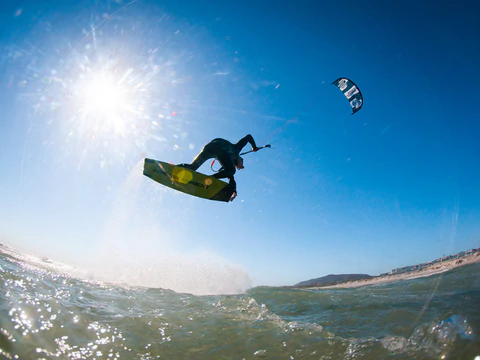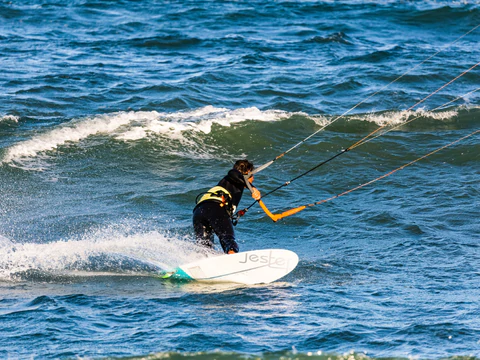You already know that the climate of a place is a decisive aspect when defining what size kite to use, which is why we have prepared the ideal information for those who want to practice kitesurfing in Dénia.

First of all, it is important to consult the wind forecasts; wind direction and force in Dénia). Keep in mind that it is a forecast and that it can change, but at least it gives us a general idea of the direction and strength of the wind, as well as what time it will be present.
Regarding technical terms, the wind direction must be on shore, side-on shore or side shore, that is, the wind must bring us to the beach or it must go in a direction parallel to it but never in the direction of the high seas. Regarding its constancy, the side shore and off shore winds tend to be gusty while the on shore wind is much more constant, as long as there are no obstacles in its path.

Now, Dénia is characterized by having thermal winds in spring-summer from the beginning of April to September/October with constant winds between 12 and 20 knots, it is usually plugged in at 14:00 until 19:00 approx.
Practically all winter winds can be navigated in Dénia, including onshore winds thanks to the shape of the coast, which in some parts faces north.
From a meteorological point of view, the Dénia kite spots -the Marina Alta and Baja- have the highest percentage of navigable windy days in the Valencian Community . Therefore, all wind directions can be navigated on these coasts and the spots are also relatively close to each other.
So what do we recommend:
- If you have a bow or delta type kite, it will be preferable with gusty winds. Type C kites have smaller wind ranges and are not known for absorbing gusts well.
- For constant winds between 12 and 20 knots, a kite of 9 to 12 meters is usually used.
- With northeast winds you can use a small kite between 7 and 9 meters
Other references to decide which kite to use:
- If there are already people browsing, look at the measures they are using.
- Pay attention to your body weight, for example, if you are a girl, you are not going to go with the same measure as the boys.
- Do not hesitate to ask the kiters in the area what size they are going to sail with.
- If it is a spot where you have never sailed, do not hesitate to approach a kite school and ask for information on the winds.
- Share opinions with the rest of the kiters, although it is an individual sport, it is still a sociable discipline.
We hope that after reading this article you feel more confident with the type of wind and the kite to choose, especially if you are a beginner, our greatest recommendation will always be to interact with other kiters in the area.

